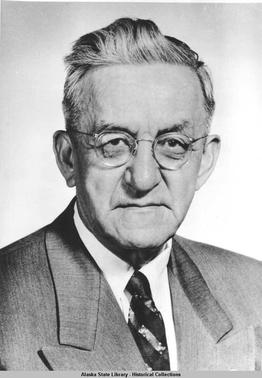William Paul (attorney) facts for kids
Quick facts for kids
William Lewis Paul
|
|
|---|---|
| Shgúndi | |
 |
|
| Personal details | |
| Born | May 7, 1885 Tongass Village, District of Alaska, U.S. |
| Died | March 4, 1977 (aged 91) Seattle, Washington |
| Nationality |
|
| Political party | Republican |
| Spouse | Frances Paul |
| Children | 3 |
| Parents | Louis Francis Paul Tillie Paul |
| Education | Whitworth University (BA) |
William Lewis Paul (born May 7, 1885 – died March 4, 1977) was an important American lawyer, lawmaker, and activist from the Tlingit people in Southeast Alaska. He is remembered as a key leader in the Alaska Native Brotherhood. He was also the first Native American lawyer and the first Native American to serve as a lawmaker in Alaska's history.
Growing Up in Alaska
William Lewis Paul was born in Tongass Village in Southeast Alaska. He was the second child of Louis Francis Paul and Tillie Paul. His parents were Tlingit, and they also had some Scottish and French family history. William's Tlingit name was Shgúndi. He belonged to the Raven group within the Teeyhittaan clan.
His mother, Tillie Paul, was a teacher. She worked with a Presbyterian mission that helped the Tlingit people. William and his brothers also went to the Carlisle Indian Industrial School in Carlisle, Pennsylvania. This school was set up to teach Native American children.
A Champion for Native Rights
William Paul and his brother, Louis Paul, were very important in starting the Alaska Native Brotherhood (ANB). In the 1920s, they helped the ANB grow. It reached almost every Native village in Southeast Alaska. This group worked hard to get voting rights and equal treatment for Native people. They also pushed for better social services. The ANB was also the first group to make land claims for the Tlingit and Haida in Alaska. William Paul served many times as the main leader of the ANB.
William Paul achieved many "firsts" for Native Alaskans. He was the first Alaska Native to become a lawyer. He was also the first to be elected to the Alaska Territorial House of Representatives. And he was the first Native American to work as an officer in the federal Bureau of Indian Affairs. He even helped write the law that created Alaska's flag in 1927. He played a big part in the Alaska Native Claims Settlement Act (ANCSA) in 1971. This act was very important for Native land rights.
When he first ran for the House in 1922, his right to vote and hold office was questioned. But his case helped prove that Native Americans had the right to vote and be elected. He faced some challenges in later elections, but he kept fighting for what he believed in.
In the 1950s, Paul worked on an important land claims case called Tee-Hit-Ton vs. U.S.. He did this for his own Tlingit clan. Even though they didn't win this specific case, it helped set the stage for the ANCSA later on.
His Final Years
William Paul passed away in Seattle, Washington, on March 4, 1977.

